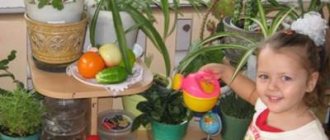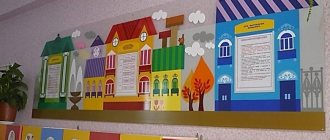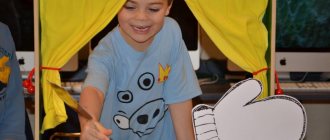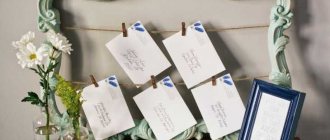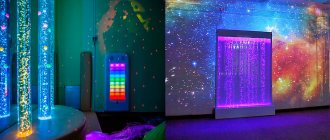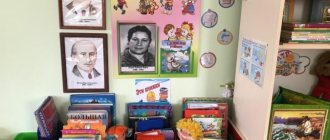How to make a presentation background based on a landscape photo?
Often templates about nature are made based on photographs, which the authors simply set on the background. With this method of creating a template, there is a possibility that the background will be too bright and active, and the text will not be readable. Creating a “background” will help you avoid this : insert a large rectangle of white or another color onto the slide, set translucency in the properties and write text inside this rectangle. This method will allow you to leave a beautiful background landscape, and at the same time make the slide text contrasting and readable.
The second problem is related to the fact that the authors insert photographs as is as a background, that is, without compression . If such a photo was taken with a good modern camera, then the background size can be about 5 MB and when inserting a photo onto each slide, each slide will “weigh” 5 MB. The presentation will be very heavy, it will be difficult to transmit over the Internet, and playback will freeze on low and medium-power computers.
To avoid this, you need to follow two rules:
- First reduce the size of the photo to the size of the screen (approximately 1200-1500 pixels wide) and compress the photo in a graphics editor or compress the photo using Microsoft Office PowerPoint itself ( File - Save As... - Tools - Compress Pictures... ).
- Insert a photo as a background for all slides ( Design - Background Styles - Background Format... - Pattern or Texture - File - {select file on your computer} - Apply to All - Close ).
This method of creating a background can be used not only to create a background for presentations about nature, but also on any other topic.
See also templates in related sections:
- Biology and Geography Presentation Templates;
- Floral patterns.
Cool corner
The classroom corner is the face of the class; it should be colorful and attractive so that children want to come to it again and again and so that it attracts the views of class guests. At the same time, it will contain useful information. There is no clear criterion for what the corner should be and what sections it should contain, so you can and should approach the issue of its design creatively. On our website we present a variety of design options for the “Cool Corner” stand for students in grades 1-4 on various topics. Here you can also download material for a corner on life safety for elementary school students. The site is constantly updated and soon you will be able to download new materials for decorating a classroom corner in an elementary school.
- Posters for the classroom corner – 1
- Posters for the classroom corner – 2
- Posters for the classroom corner – 3
- Posters for the classroom corner – 4
- Posters for the classroom corner – 5
- Posters for the classroom corner – 6
- Posters for the classroom corner – 7
- Posters for elementary school “Safety Corner”
- Traffic rules posters for a classroom corner in an elementary school – 1
- Traffic rules posters for a classroom corner in an elementary school – 2
- Posters for a classroom corner in an elementary school “Traffic Light Tips”
- Lesson schedules for elementary school
- Posters on the theme of the cartoon “Masha and the Bear”
download in PowerPoint format:
1. Class corner designer (you can change the data to suit your class)
2. Reminders for the school corner
And this is what a school class might look like on September 1:
Download class design for September 1 from Dmitry Tarasov
Background for presentation Nature
Technological progress is significantly changing our ideas about how lessons and extracurricular activities should be conducted, and what the requirements are for speaking at a teacher’s council or methodological association. Now it is hardly possible to imagine all this without a computer PowerPoint presentation. This program allows you to demonstrate various tables, graphs, diagrams, illustrations, as well as video clips during the oral presentation of the material. It is difficult to overestimate the importance of presentation in science classes. After all, on the screen you can see both a dangerous chemical experiment that cannot be carried out in a school laboratory, and a rare animal or natural phenomenon.
However, when preparing a presentation, too much time is spent on technical issues, one of which is layout design. After all, you want the background to be beautiful and match the theme of the lesson. But you can solve this issue much faster and easier by choosing a layout on our website. We offer ready-made templates made in different styles; You can choose a universal or thematic design. Let’s say in this section we offer you to look at beautiful and original backgrounds on the theme “Nature”, download them for free in a few seconds and use them to create your own presentation.
Article “Methodology of working in a corner of wildlife”
WORKING METHOD IN THE WILDLIFE CORNER
The article discusses the current problem of practical significance and the need to introduce a corner of wildlife at school, the inhabitants of the corner of wildlife.
Keywords:
nature, plants, animals, protection, wildlife area.
Currently, the formation of strong knowledge, skills, environmentally sound behavior, ethical standards and principles of attitude towards the natural environment is impossible within the framework of the classroom-lesson system alone. It is necessary to expand students' contacts with nature and the animal world. Involving them in real, practical activities to study the animal world and protect the environment.
One of the forms of organizing such activities is a corner of wildlife. A corner of wildlife is a rather attractive object of observation and care for children. After all, this is not only a place for storing living plants and animals and for preparing experiments with them, but also a place for conducting extracurricular and extracurricular activities. Children should be taught to work in a corner of wildlife from the 1st grade.
The initial course of natural history is fraught with great opportunities for solving such problems as nurturing love for the Motherland, for native nature and caring attitude towards nature, its riches, nurturing hard work, aesthetic views, etc. To successfully implement these tasks, experienced teachers call students have a direct interest in studying their native nature, showing them the strength of natural connections. Only on the basis of knowledge and skills can we convince schoolchildren of the need for a caring attitude towards the riches of nature.
A corner of wildlife can be in a natural history classroom and be an integral part of it. It is better if the school has a separate room to accommodate it. This could be a school-wide corner for children in junior and senior classes. Here work can take place with plants or animals in classes and groups depending on the interests of the students.
The room for a corner of wildlife must be well lit and meet the standards and requirements for keeping animals and growing plants. A constant temperature should be maintained in a corner of wildlife: this is the optimal condition for plant growth and keeping animals. The selection of plants and animals and the determination of their quantity depend on the specific conditions of the school.
The main pedagogical requirements that a teacher should follow in organizing extracurricular work in a corner of wildlife are:
- accessibility of material to students;
- local history approach in the selection of material;
- the principle of seasonality in work;
- socially useful orientation.
Based on the requirements of the natural history program, the content of work in the wildlife corner by year of study may be as follows:
1st – 2nd grades
. Caring for 2-3 indoor plants, developing the skills to water plants, wash and trim leaves, remove dust, etc. Maintaining a nature and labor calendar. Participation in feeding birds. Observing fish in an aquarium.
3rd grade.
Caring for 6 - 7 indoor plants. Observing the budding of shoots of the most common trees and shrubs in the area, growing vegetable plants from seeds, and ornamental plants for the school yard. Observation of the life of the most common insects in the area (1 - 2 species), the life of birds in cages, aquarium fish, animals (frog, toad, squirrel, hedgehog, white mouse, guinea pigs, turtles, etc.).
4th grade
. Caring for indoor plants, replanting them, vegetative propagation (cuttings), growing seedlings. Conducting experiments to determine the influence of weather conditions on the budding of trees and shrubs. Observation of aquarium fish, feeding, care and observation of all inhabitants of the corner of wildlife.
Plants are selected in accordance with the natural history curriculum. The greatest variety is represented by indoor plants. Indoor plants should be selected in such a way that, using their example, students can be introduced to the external structure of plant organs, methods of reproduction, and carry out a variety of practical work on growing. In a corner of wildlife you should keep unpretentious plants that have an aesthetic appearance. The most common indoor plants: aloe, agave, aspidistra, aspagarus, balsam, begonia, gloxinia, cacti, saxifrage, coleus, clivia, various types of cacti, cypress, monstera, pelargonium, ferns, sansevieria, tradescantia, Uzambara violet, ficus, fuchsia.
In the spaces between the windows of the classroom, you can equip a hanging aquarium and terrarium, where you can keep individual representatives of local and aquarium fish, reptiles or amphibians. Examining a corner of the underwater kingdom through the glass of an aquarium, schoolchildren are clearly convinced that everything in nature is closely connected to each other. In a properly equipped aquarium, animals are in conditions close to natural, so observations of them provide interesting information about their lifestyle and behavior, as well as a wide variety of adaptations to the aquatic environment.
In addition to fish, aquariums can contain some mollusks, swimmers, hydras, leeches and other invertebrates. Mollusks are the orderlies of aquariums. School aquariums can contain various shellfish collected from local reservoirs, but it should be remembered that after catching them they cannot be immediately placed in the aquarium. Shellfish are carriers of various infectious diseases, so they are initially kept in clean water.
The corner of wildlife may contain hydras, mollusks (coils, physes, pond snails, toothless ones), daphnia, cyclops, diving beetles, diving beetle larvae, dragonflies, mayflies.
Inhabitants of this corner of nature:
Fish: primarily aquarium fish: gouramis, swordtails, macropods, cyclasomes, goldfish, barbs, crab catfish. For a school corner of nature, it is more expedient, and most importantly more accessible, to set up the simplest aquarium, let’s call it a cold-water aquarium. It is in a cold-water aquarium that river fish studied in school and out-of-school institutions can be bred and kept: perch, carp, crucian carp, smelt, tench, rudd, gudgeon, and loach.
Amphibians: gray toad, ambystoma.
Reptiles: Central Asian tortoise, lizards (viviparous, fast). Reptiles are kept in terrariums.
Insects: silkworms (mulberry and oak), cabbage butterfly, ladybug.
Birds: canaries, redpolls, budgerigars, siskins, goldfinches, buntings, weaver birds, parrots: rosella, cockatiel.
Mammals: chipmunk, common white mice, white rats, squirrel, hamsters, guinea pigs.
A wildlife corner for primary schools is extremely important. Constant communication with living objects, conducting observations and experiments with them, as well as performing systematic work on caring for animals and growing plants teach children to be independent, increase responsibility for completing tasks, and instill a love of nature.
In the process of long-term observations of plants and animals, schoolchildren accumulate knowledge that allows them to correctly understand what their growth and development depends on, what is the relationship of plants and animals with the environment, which contributes to the formation of a scientific worldview of the phenomena and processes occurring in living organisms.
It is important that in the corner of wildlife and in the training and experimental site, plants listed in the Red Book are grown, and mainly those that are subject to protection in the area. All extracurricular and extracurricular work should be directed toward the protection, study and expansion of protected natural objects.
The corner of wildlife is an important part of the material base in the educational process. It contributes to the best implementation of environmental and environmental education, the formation of a scientific worldview, the education of scientific and atheistic beliefs, and the instilling in children of patriotic and moral feelings and love for the Motherland.
Pictures for a cool corner
Every school office has a stand - a Cool Corner. At this stand, the class teacher places important information for students, announcements, photos, and congratulations. Bright pictures for the classroom corner will give the stand an elegant look, add a good mood to students and decorate the school office.
We have collected a selection of pictures to decorate such a corner. You can download a selection of pictures or print individual tabs for the classroom corner.
When choosing pictures for the school corner, focus on the age of the students. Bright, cheerful, rich pictures are suitable for elementary school and especially first grade. In high school, the design of the classroom corner may be more strict.
Posters for the classroom corner
Download pictures for the cool corner in good resolution - DOWNLOAD
Templates for a classroom corner
These classroom corner templates can be used to display on a finished, clean display.
DOWNLOAD cool corner No. 1
DOWNLOAD cool corner No. 2
DOWNLOAD cool corner No. 3
Choose your favorite pictures for the cool corner and your office will be brighter!


